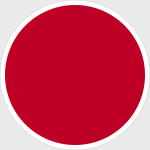Corgi AA33108 Imperial Japanese Navy Mitsubishi A6M2 Zero Fighter - AI-I54 s/n.5289, Petty Officer 1st Class Takashi Hirano, IJN Aircraft Carrier Akagi, Pearl Harbor, December 7th, 1941 [75th Anniversary of the Pearl Harbor Attack] (1:72 Scale)
"I fear all we have done is to awaken a sleeping giant and fill him with a terrible resolve."
- Japanese Rear Admiral Isoruku Yamamoto, chief planner of the attack on Pearl Harbor, in the wake of the aerial attack
 The Mitsubishi A6M "Zero" is a long-range carrier-based fighter aircraft formerly manufactured by Mitsubishi Aircraft Company, a part of Mitsubishi Heavy Industries. It was operated by the Imperial Japanese Navy (IJN) from 1940 to 1945. The A6M was designated as the Mitsubishi Navy Type 0 carrier fighter, or the Mitsubishi A6M Rei-sen. The A6M was usually referred to by its pilots as the Reisen (zero fighter), "0" being the last digit of the imperial year 2600 (1940) when it entered service with the Imperial Navy. The official Allied reporting name was "Zeke", although the name "Zero" was used colloquially as well.
The Mitsubishi A6M "Zero" is a long-range carrier-based fighter aircraft formerly manufactured by Mitsubishi Aircraft Company, a part of Mitsubishi Heavy Industries. It was operated by the Imperial Japanese Navy (IJN) from 1940 to 1945. The A6M was designated as the Mitsubishi Navy Type 0 carrier fighter, or the Mitsubishi A6M Rei-sen. The A6M was usually referred to by its pilots as the Reisen (zero fighter), "0" being the last digit of the imperial year 2600 (1940) when it entered service with the Imperial Navy. The official Allied reporting name was "Zeke", although the name "Zero" was used colloquially as well.
The Zero is considered to have been the most capable carrier-based fighter in the world when it was introduced early in World War II, combining excellent maneuverability and very long range. The Imperial Japanese Navy Air Service also frequently used it as a land-based fighter.
In early combat operations, the Zero gained a reputation as a dogfighter, achieving an outstanding kill ratio of 12 to 1, but by mid-1942 a combination of new tactics and the introduction of better equipment enabled Allied pilots to engage the Zero on generally equal terms. By 1943, the Zero was less effective against newer Allied fighters. The Zero lacked hydraulic boosting for its ailerons and rudder, rendering it difficult to maneuver at high speeds. Lack of self-sealing fuel tanks also made it more vulnerable than its contemporaries. By 1944, with Allied fighters approaching the A6M's levels of maneuverability and consistently exceeding its firepower, armor, and speed, the A6M had largely become outdated as a fighter aircraft. However, as design delays and production difficulties hampered the introduction of newer Japanese aircraft models, the Zero continued to serve in a front-line role until the end of the war in the Pacific. During the final phases, it was also adapted for use in kamikaze operations. Japan produced more Zeros than any other model of combat aircraft during the war.
Pictured here is a 1:72 scale replica of an Imperial Japanese Mitsubishi A6M2 Zero fighter that was piloted by Petty Officer 1st Class Takashi Hirano, who was embarked upon the IJN Aircraft Carrier Akagi, during its attack on Pearl Harbor on December 7th, 1941.
Sold Out!
Dimensions:
Wingspan: 6-1/2-inches
Length: 5-inches
Release Date: September 2016
Historical Account: "Akagi" - As the Zero fighters from Imperial Japanese Navy aircraft Carrier Akagi took off on the morning of December 7th, 1941, their mission instructions were clear - protect the strike aircraft from enemy fighters and destroy as many American aircraft on the ground as possible. As the Pearl Harbor attack was taking place in advance of any formal declaration of war, the US fighter units based at Hawaii were not expecting an attack and many aircraft were parked in neat rows on their home airfields. As Takashi Hirano approached Hickam Field in Mitsubishi Zero AI-I54, the lines of American aircraft made for easy targets and he raked them with machine gun bullets. Appearing to become disorientated at this extremely low altitude, Hirano's Zero struck the ground, ripping the belly tank from beneath the fuselage and causing the tips of the propeller to become damaged - struggling to gain height his damaged aircraft began to vibrate violently.
Unable to regain control, Hirano's Zero struck a coconut tree and cartwheeled into buildings at Fort Kamehameha, killing him instantly, along with a group of men on the ground, who were unable to escape the impact. Hirano's aircraft was the first Japanese Mitsubishi Zero fighter to be brought down during the Pearl Harbor raid, even though it was by his own hand.


